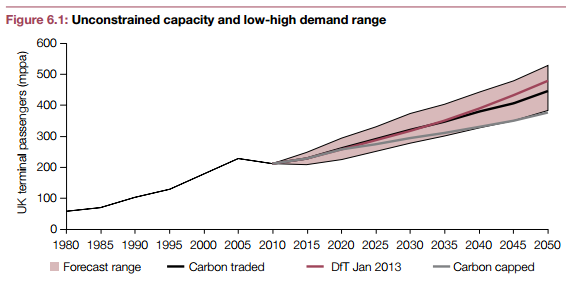Airport expansion: the options, the numbers and the noise
This week the Airports Commssion, chaired by Howard Davies, published its interim report into the future options for expanding the UK's airport capacity.
It was originally set up last year to "examine the scale and timing of any requirement for additional capacity to maintain the UK's position as Europe's most important aviation hub; and it will identify and evaluate how any need for additional capacity should be met in the short, medium and long term."
It plans to finalise its recommendations in the summer of 2015, after the next general election.
Read about which options are on the shortlist, how full the UK's airports are, how much a third Heathrow runway could add to CO2 emissions and how many Londoners are affected by noise pollution from the hub airport.
The Commission shortlisted three main options:
- A new runway at Heathrow off to the northwest
- Extending the existing north runway at Heathrow out west so it can operate arrivals and departures at the same time
- A new runway at Gatwick south of the existing one
While not included here, options in the Thames Estuary (such as the well-known 'Boris Island' option) weren't ruled out by the Commission, but "presented many challenges and uncertainties" that need to be overcome before anything further happens.
"Heathrow is already 98% full. By 2030, Gatwick, London City and Luton are all forecast to become full"
One of the main reasons it's claimed to be necessary to expand the UK's aviation capacity is that the country's main 'hub' airport - Heathrow - is operating at 'full capacity', and demand is set to continue rising in the future, putting ever more strain on our aviation infrastructure.
This is how the government think passenger numbers would look over the next 40 years if there weren't any expansions in capacity.
 Heathrow is the most used airport in the country. In the year to October 2013, 72 million passengers used terminals at the airport, almost a third of the UK's passengers.
Heathrow is the most used airport in the country. In the year to October 2013, 72 million passengers used terminals at the airport, almost a third of the UK's passengers.
Capacity is actually quite difficult to measure - experts outline no fewer than five different ways that it can be measured - in terms of runways, aprons (where planes 'park'), the passenger terminal, surface access and environmental limits specific to the airport.
However the most commonly-used measure is to focus on runway capacity, that is, the number of aircraft movements that can be handled in a given time period. The higher capacity is used up, the more prone to congestion the airport will tend to be as it struggles to cope with delays.
The latest estimates also show that by 2030, Heathrow, Gatwick, Luton and London City airports will be at 100% capacity, leaving only Southend and Stansted* airports with any room to spare in the wider London area.
"There was a warning in 2009 that a third runway would result in 220,000 extra flights a year; in emission terms, this is equivalent to the entire country of Kenya's annual output".
Quoted in this week's Guardian was an old claim dating back to 2009 from the World Development Movement (WDM), suggesting a third runway would be equivalent to Kenya in terms of adding carbon emissions to the UK's output. This would sit uneasily with the UK's commitment to reduce greenhouse gas emissions by 80% by 2050.
We contacted the WDM to find out more detail but they were unable to help us.
That said, it's true that the government forecasted in 2009 that, compared to the current cap of 480,000 flights a year from Heathrow (set in 2001), a third runway would open up enough capacity for 700,000 flights by 2030 - an increase of 220,000 a year. Similar estimates are still being made today.
The same 2009 forecast found that without a third runway, Heathrow's own contribution to the UK's emissions would be 18 million tonnes of CO2 by 2030 (today the UK produces about 475 million tonnes in total). With a third runway, they'd be up to 24 million tonnes.
On its own, this increase would be half of Kenya's 12 million tonne output, but we don't know whether WDM considered any other factors in reaching their much higher estimate.
"25 per cent of people in Europe who suffer from aviation noise live near Heathrow"

This claim was made some time ago by Boris Johnson but the numbers haven't been updated since. Earlier this year the Airports Commission looked at the evidence surrounding aviation noise and found that Heathrow affects more people than any other major airport in Europe, and just over a quarter of all those affected.
The measure used to calculate the area affected is called the 'Lden', which calculates the average continuous noise level over 24 hours, although giving more weight to noise at night.
So it's not an exact measure of everyone who is in some way affected by noise from Heathrow, just those within a set area where it's loudest.
*UPDATE Original article said Southend was the only airport in the London ariport with predicted spare capacity by 2030. This should have included Stansted.

